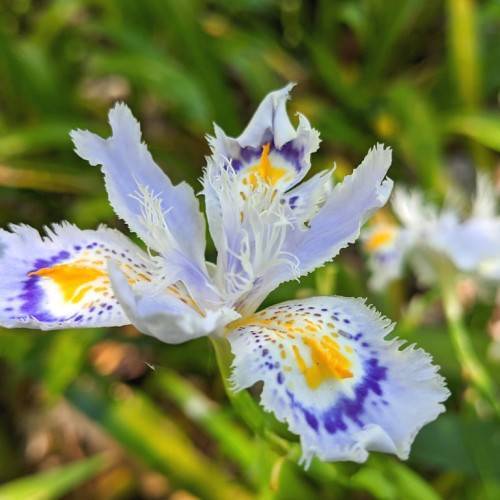
Japanese iris
Iris japonica
Cycle:
Herbaceous Perennial
Watering:
Average
Hardiness Zone:
7 - 9
Flowers:
Flowers
Sun:
Part shade
Leaf:
Yes
Growth Rate:
Low
Maintenance:
Moderate
Drought Tolerant:
Yes
Salt Tolerant:
Yes
Invasive:
Yes
Care Level:
Medium
watering
Japanese iris should be water regularly and deeply. During the growing season (March - September), water 2 – 3 times a week, making sure the soil is moist but not soggy. During the hot summer months, water every other day in the morning. In the winter, water 1 – 2 times a week and increase watering slightly during very cold periods.
sunlight
Japanese iris (Iris japonica) benefits from at least 6 hours of direct sunlight each day during the growing season. Full sun is ideal during the hours of 10am-4pm, when the sun is up and the UV radiation is most intense. This will help the plant to flower well and promote strong, healthy growth. During the hottest summer months, Japanese iris may benefit from some afternoon shade.
pruning
Japanese iris (Iris japonica) should be pruned once a year, typically after blooming in early to mid-summer. Pruning should be done carefully, as Japanese iris have shallow roots and are easily damaged. The objective should be to deadhead any spent blooms and remove any damage caused by pests or disease. Removing any dead, damaged or diseased foliage as soon as possible is the best way to keep Japanese iris healthy. When pruning Japanese iris, it is important to take off only a small amount of the foliage; try to only trim 1 to 2 inches from the top of the plant. Cutting too much could damage the plant. Take care not to damage the foliage or the crown when using clippers or shears.
